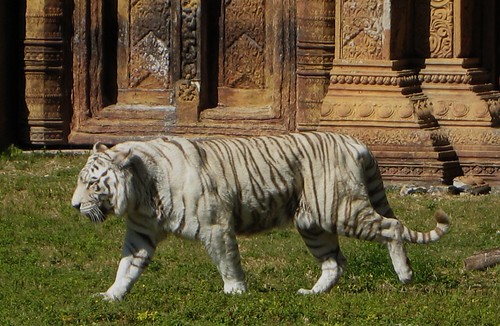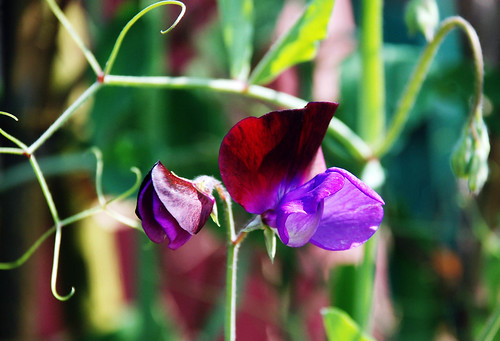Amitabha (also known as Amida Buddha or Great Buddha), is the Buddha described in the scriptures of the Mahayana Buddhism. Amitabha is the principal Buddha in the Pure Land Buddhism (also referred to as Amidism), a branch of Mahayana Buddhism which is one of the most popular schools of Buddhism in East Asia, along with Zen Buddhism. According to the Mahayana scriptures, Amitabha possesses infinite merits resulting from good deeds over countless past lives as a bodhisattva named Dharmakāra. Amitabha is translatable as ‘Infinite Light,’ hence Amitābha is often called ‘The Buddha of Infinite Light.’
The bronze statue of Amida Buddha meditating in Padmasana Yoga posture is located in Kōtoku-in, a Buddhist temple of the Jōdo shū sect in the city of Kamakura in Kanagawa Prefecture, Japan. The height of the statue is 13.35 meters and weighs approximately 93 tons. The statue is hollow, and visitors can view the interior of the statue for a small payment.
It is believed that the statue was originally cast in 1252, in the Kamakura period, as conceptualized by the priest Joko, and sculpted by One-Goroemon and Tanji-Hisatomo. The statue was built inside a wooden temple, but that building washed away in the tsunami of September 20th, 1498 during the Muromachi period. But the statue survived the tsunami. Since then the statue has been in the open air. Repairs were carried out in 1960-1961, when the neck was strengthened and precautionary steps were implemented to protect it from earthquakes.
Yoga, the traditional physical and mental disciplines originating in India, is associated with meditative practices in eastern religions such as Hinduism, Buddhism and Jainism. In Hinduism, it also refers to one of the six orthodox schools of Hindu philosophy. Buddhism yoga is associated with meditative methods. In Jainism it refers to the sum total of all activities; mental, verbal and physical.
Ancient expression of Yogic ideas can be found in the early sermons of the Lord Buddha. A key teaching of Buddha was that meditative absorption should be combined with the practice of mindfulness. Buddha taught meditative states alone are not an end and even the highest meditative state is not liberating. Instead of attaining a complete cessation of thought, some sort of mental activity must take place such as a liberating cognition based on the practice of mental awareness.
The Buddha also departed from earlier Yogic thought in discarding the early Brahminic notion of liberation at death. Liberation for the Brahminic Yogi was thought to be the realization at death of a non-dual meditative state anticipated in life. In fact, old Brahminic metaphors for the liberation at death of the yogic adept were given a new meaning by Buddha. Yoga is of much importance to many branches of Buddhism.
Yogachara Buddhism, also spelled Yogacara Buddhism, is a school of philosophy and psychology that developed in India during the 4th to 5th centuries. Yogacara received the name as it provided a Yogi a framework for engaging in the practices that lead to the path of the bodhisattva. The Yogacara sect teaches Yoga in order to reach enlightenment.
Ch'an Buddhism, also known as Seon or Zen: The name Zen derives from the Sanskrit word ‘dhyaana’ via the Chinese ‘ch'an’, and it is a form of Mahayana Buddhism noted for its proximity to Yoga. In the west, Zen is often set alongside Yoga. The two schools of meditation display familiar resemblances, and it merits special attention since the Zen Buddhist school of meditation has some of its roots in Yogic practices. Certain essential elements of Yoga are important both for Buddhism in general and for Zen in particular.
Indo-Tibetan Buddhism: Yoga is central to Tibetan Buddhism. In the Nyingma tradition, the path of meditation is divided into nine Yanas, or vehicles. The last six are described as ‘Yoga Yanas’; Kriya Yoga, Upa Yoga, Yoga Yana, Mahā Yoga, Anu Yoga and Ati Yoga. The Sarma traditions also include Kriya, Upa (Charya) and Yoga, with the Anuttara Yoga class substituting for Mahayoga and Atiyoga.
Other Tantra Yoga practices include a system of 108 body postures practiced with breath and heart rhythm. The Nyingma tradition also practices Yantra Yoga (in Tibetan: Trul khor), a discipline which includes breath control (or Pranayama), meditative contemplation. The body postures of ancient Tibetan Yogis are depicted on the walls of the Dalai Lama's summer temple of Lukhang. An account of Tibetan Yoga by Chang (1993) refers to caṇḍalī (Tibetan: tummo), the generation of heat in one's own body, as being ‘the very foundation of the whole of Tibetan Yoga’. Chang also claims that Tibetan Yoga involves reconciliation of apparent polarities, such as Prana and mind, relating this to theoretical implications of Tantrism.
Resolution: 1600 x 1075 pixels, file size; 184 KB, MIME type; image/jpeg. CLICK on the above photo to enlarge and download it. Full resolution of the original photo (not included here because of the huge size) is 3722 x 2501 pixels; 7.14 MB. Click here to send a request if you need the original for any genuine purpose.











